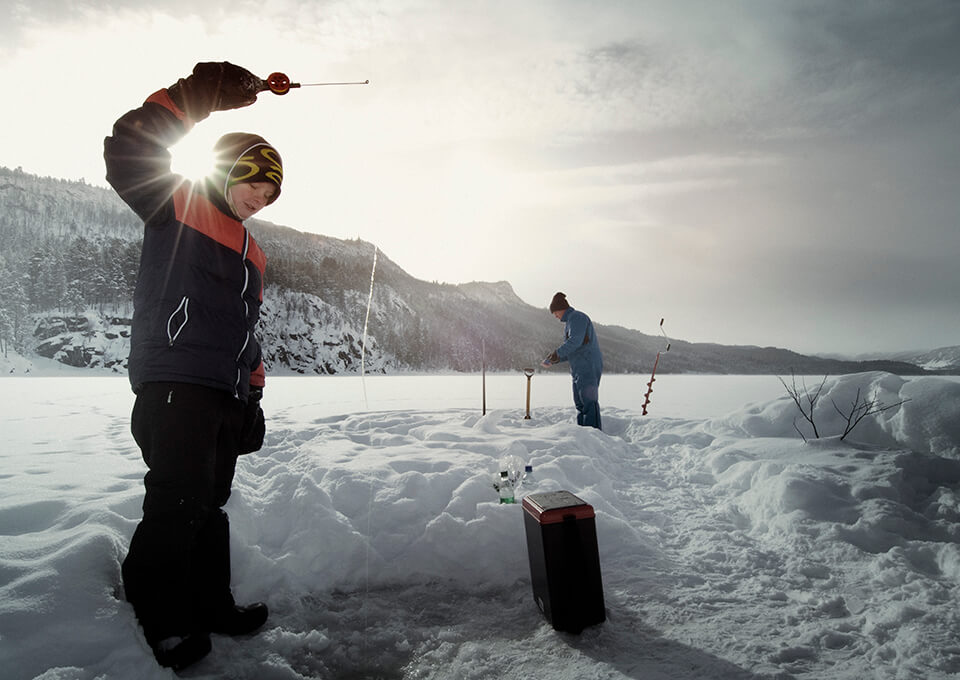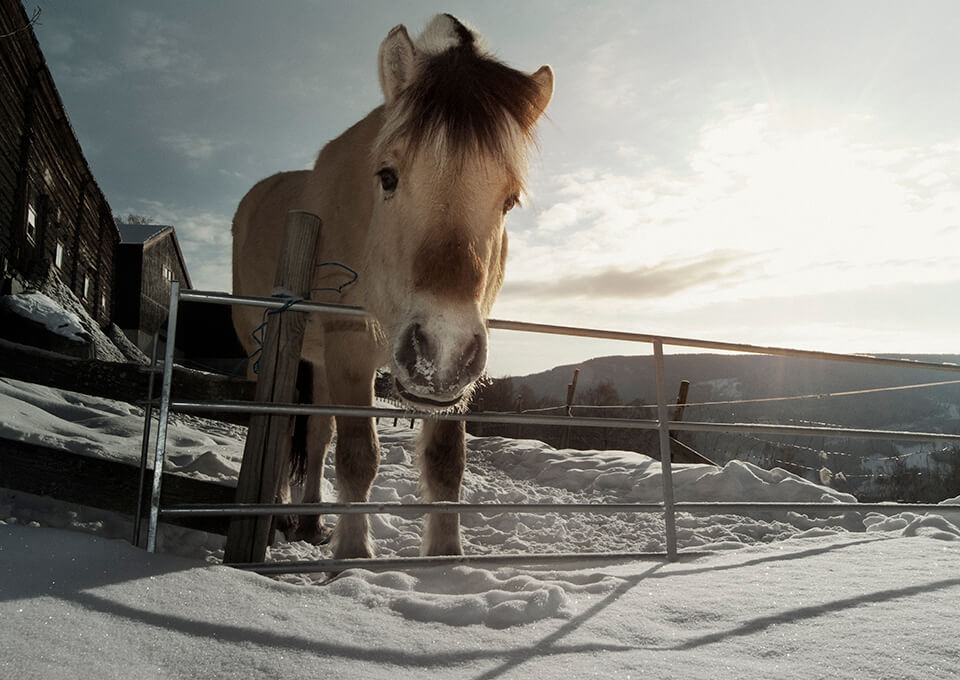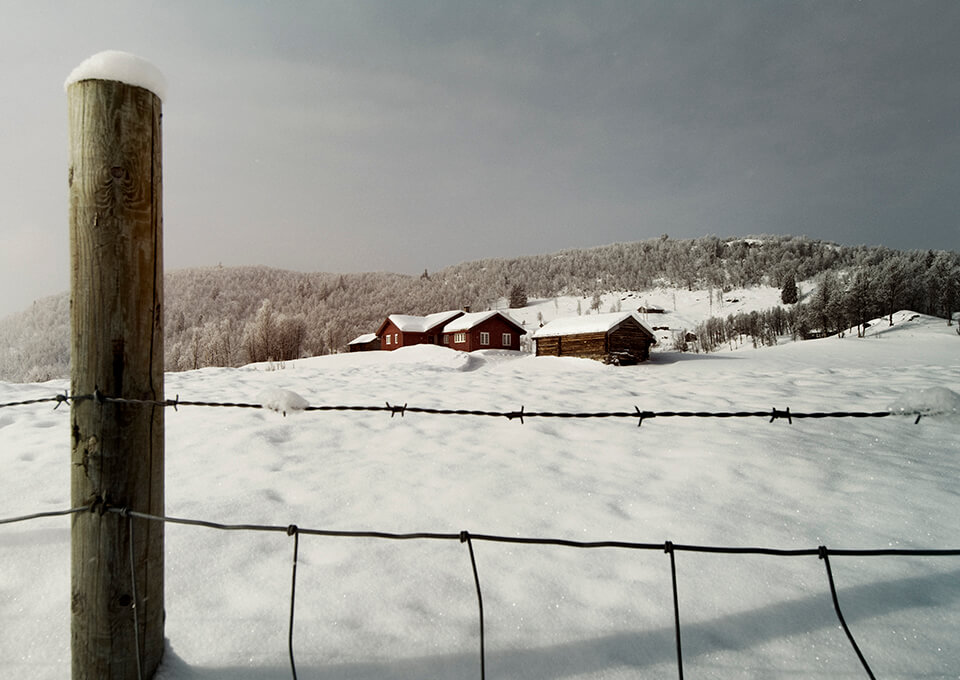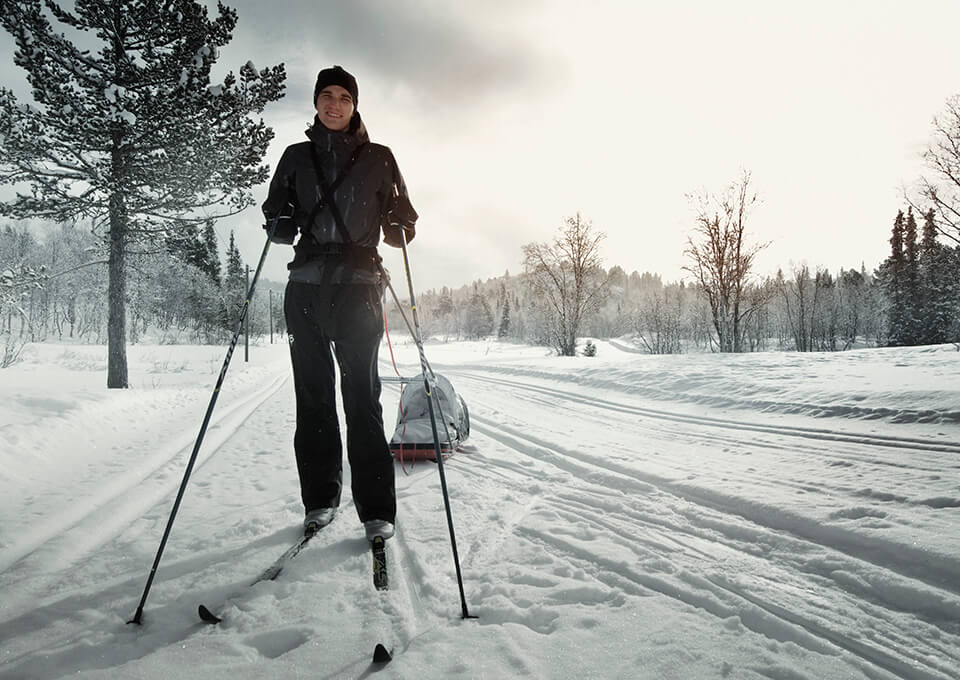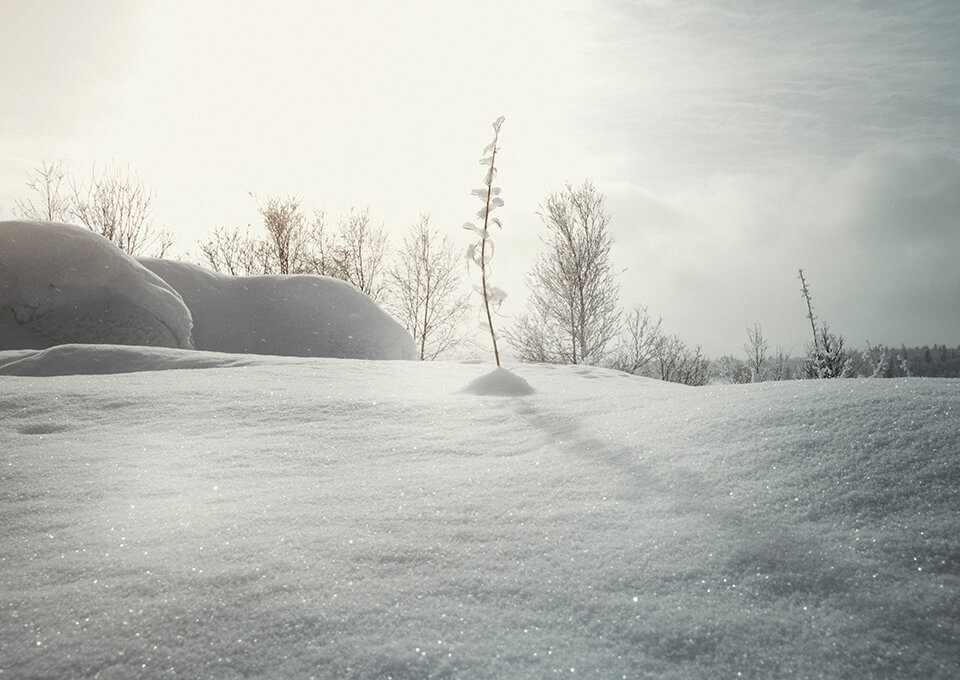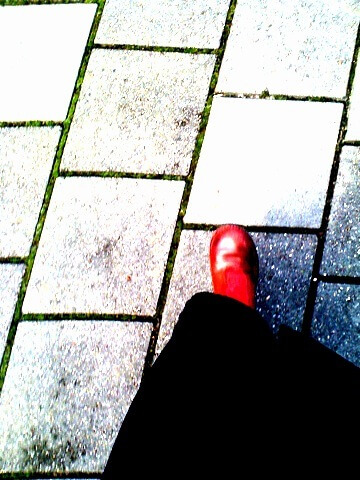‘The religion of the Norwegians is nature and we are right in the middle of it.’ This text adorns Kåre Berg’s business card – he is the proprietor of the Bersjøstølen hotel. The first time we drive over the breathtakingly beautiful snow plain on our way to this hotel, we are so impressed by this religion that we promptly drive off the road and sink into the verge.
It turns out to be a good introduction to the Norwegian community in Hallingdal, because from that moment onwards, every time we meet someone new, we hear the words: ‘Hey, aren’t you the two journalists who…?’
Norwegian moon landing
Back to the moment before we shot off the road. Close your eyes. Block out the sound. On the left you see brilliant white mountains. Mountains covered with round white lumps like mozzarella cheese in a Norwegian landscape salad. Only the occasional log cabin.
No trees. Snow is piled right up to the windows of the cabin. There is no sound. No aircraft to sully the cloudless blue sky with a white trail.
Hallingdal
Before you lies a snowy road that crawls upward between the white of the mountains. To distinguish white from white, coloured poles have been set in the verge. On the right, the mountain runs down sharply until it comes to a standstill on an ice plain where countless cross-country ski trails have been set out.
This is Hallingdal Norway. Or perhaps it is just the end of the world.
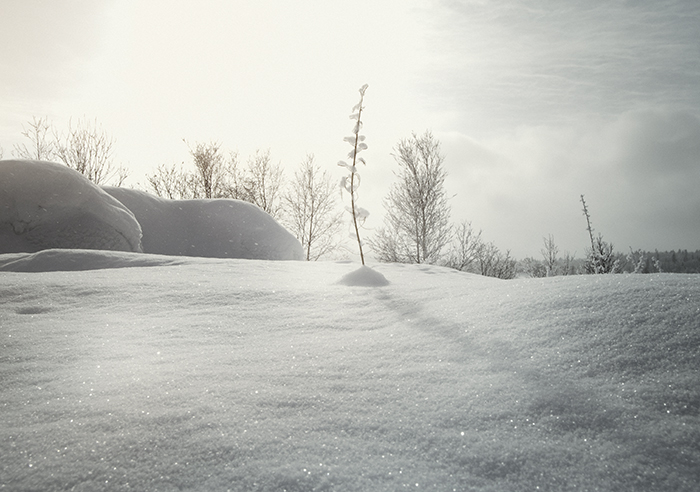
We reach the end of the world by train from Oslo. A train with wooden panelling and clothes hangers dangling from a rack. We alight at Gol station. We are here for the cross-country skiing or long-running as the Norwegians call the ancient sport.
Reindeer meat
Wobbling on the narrow slats and pushing off with the loose heel of the long-running shoe, we make our first journey. We are carrying a rucksack full of food suitable for people moving mountains: salmon, reindeer meat, salads, tomatoes and Norwegian cheese.
Unlike in the Netherlands, where the guests are anxiously monitored at breakfast to make sure they don’t secretly pinch a piece of bread for lunch, you are supposed to make up your lunch at the breakfast table. Sandwich bags and fasteners make this clear.
A pulk
Every few kilometres we are alerted by red warning signs that a langlaufer is approaching fast. Perhaps we are being warned about ourselves, because we don’t run into anyone at all in Hallingdal. Together with the silent white trees, we are the only presence in the winter décor.
Every now and then we see the snowy roof of a traditional farmhouse flanked by wooden sheds with their characteristic narrow underbodies and overhanging bellies. Farm labourers used to sleep here above the grain, protected from wild animals.
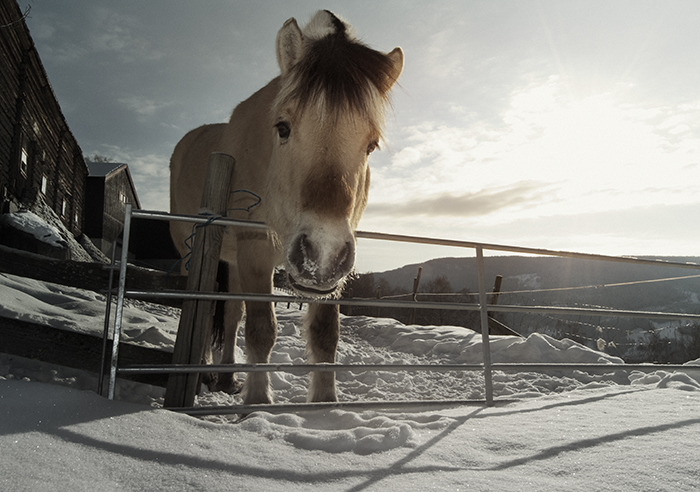
Legend has it that King Haakon IV was kidnapped when he was just a two-year old crown prince. He was rescued by Torstein and Skjervald, who carried the toddler in their arms for 200 long kilometres on skis. Poor Torstein and Skjervald – if only they had been born 800 years later, they could have placed the prince in a pulk like Andreas Pedersen does with his small daughter.
We run into Andreas on Skrindehaugen. An area with various cross-country skiing trails that are also lit up at night. Around his waist he is wearing a band with cords leading to a toboggan where his daughter of a little more than one year old is sleeping.
“Ideal”, Pedersen tells us. ‘The pulk is the perfect means of transport for parents with young children who would like to make a trip.’
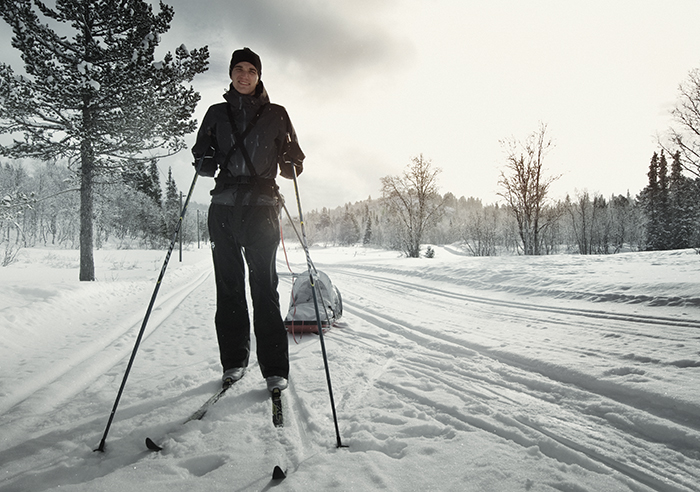
Pedersen comes from Bergen but has a second home in a scenic nature area in Hallingdal, like many Norwegians. ‘Hallingdal has everything’, declares the Norwegian. ‘You can make wonderful trips but it is also good for snowboarding or downhill skiing. Heaven on a white earth.’
That same evening, we are standing next to a little wooden house beside an illuminated biathlon track. Shooting is combined with skiing here. Trainer Arnstein Sørbøen has just taught us the finer points of this popular sport when children between the ages of eight and sixteen whizz up.
They make skating movements with their skis to achieve high speeds. To reach the targets 50 metres away, they lie on a black tarpaulin at a temperature of -12° C. If you miss, you have to ski another kilometre before you can have a second shot.
Ice fishing
Norwegians, snow and nature: it is a trinity. Each encounter is brought back to this essence. Whether it’s Kay Stein whose land we glide onto to ask if we can take photos of his horses or 10-year-old Mart who is ice fishing on Vassfjorden. They are all active within the possibilities offered by the snowy nature.
Kay with his fjordhest, the horse that survives in this region because it can cope with fields that are filled with snow seven months of the year. Mart, standing on a frozen lake with his fishing rod. He first spent an hour clearing the snow with a broom. After that, he made a hole with a hand drill through the 60 cm thick ice into which he now throws his line.
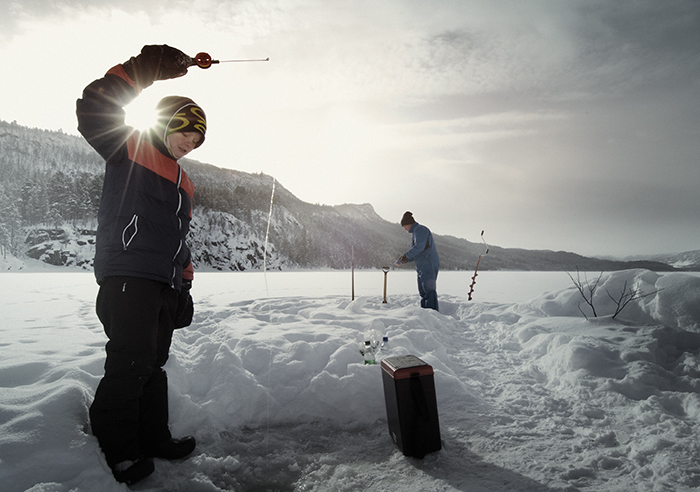
But ultimately it is husky Wilma who makes the deepest impression on me. As the leader of an eight-dog sled team, she allows me to drive her and the other dogs, standing on the wooden runners of the husky sled. Her ears are pricked as the sled glides through the deserted snow plain and over the ice round Vindhaugen.
Alone, accompanied solely by dogs running soundlessly through the snow and with the only oncoming traffic a postman on a snow scooter, I understand the Norwegian trinity perfectly.
Frozen lake Bersjøen
Back to the moment before we shot off the road. Follow the road down to the frozen lake Bersjøen. Al the way to the Bersjøstølen hotel. Keep your eyes closed a moment longer. On your left lie white mountains in the red glow of the sun taking its morning stroll over the ridge. On the right, an endless ice plain stretches out.
Here and there a black shrub sticks up out of the whiteness like someone drowning and just about to go head under in the snow. I don’t know how Armstrong felt when he set foot on the moon, but it is hard to believe it could have been more euphoric than during our ski strides in the Norwegian lunar landscape.
Text: Anneke de Bundel – Images: Nicole Franken
Translation: Christine Gardner
This story had been published in Columbus Magazine
Norway practical:
- We slept in Bersjøstølen hotel
- and Liatoppen Fjellstue

